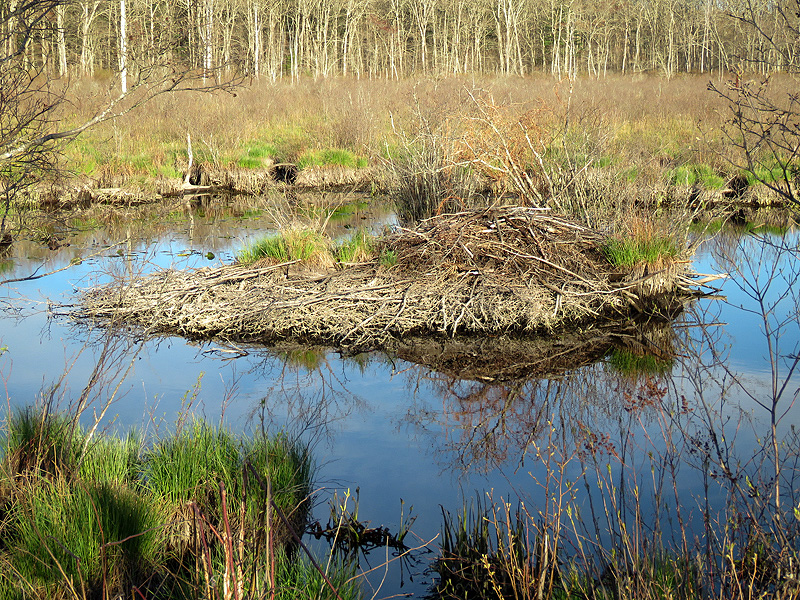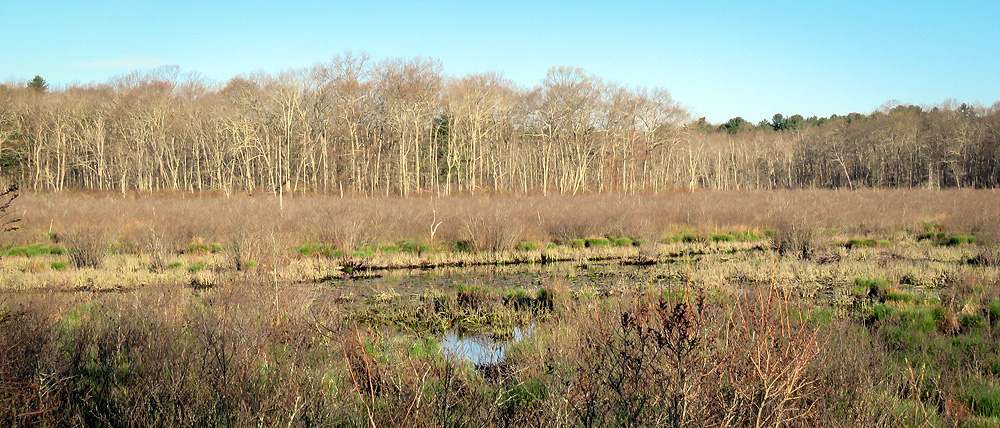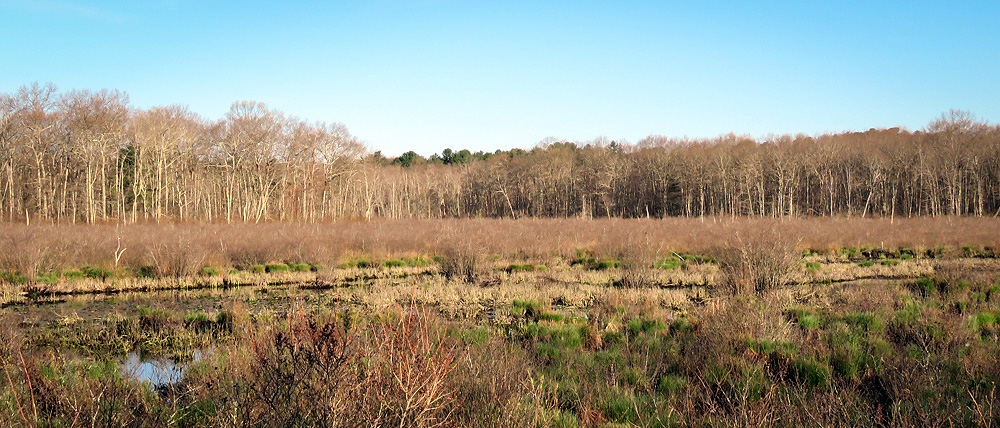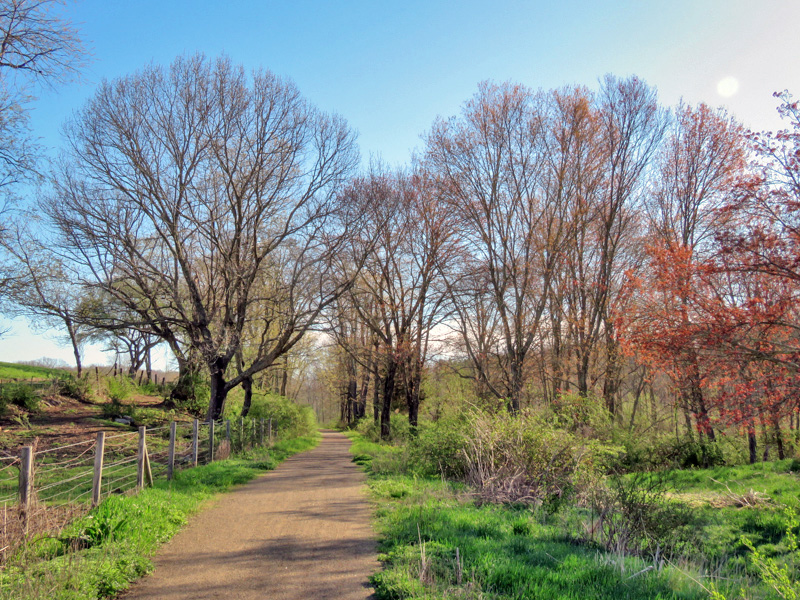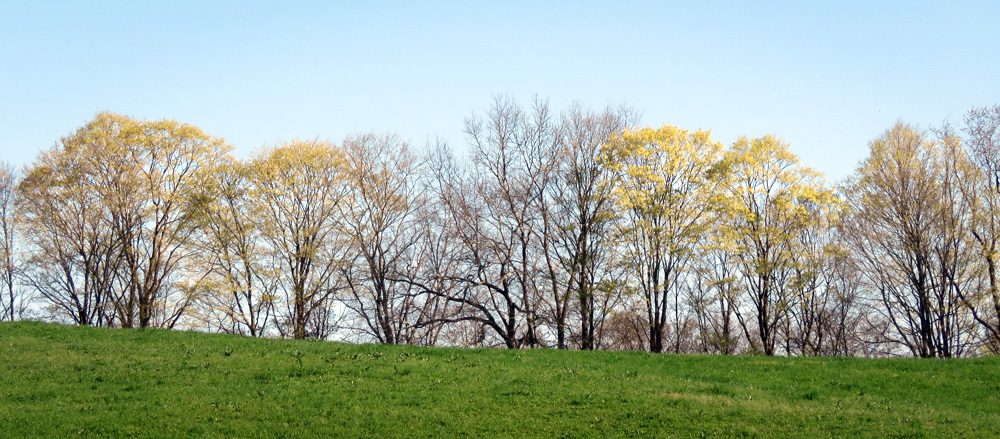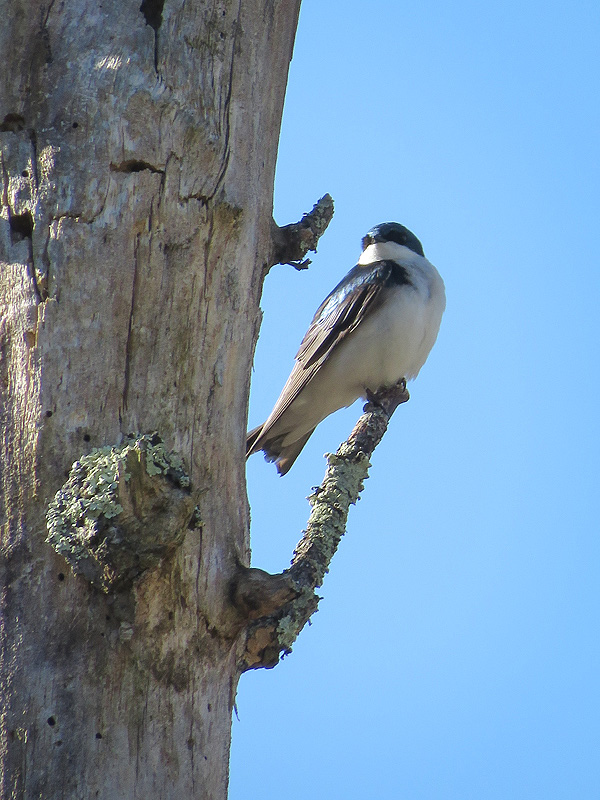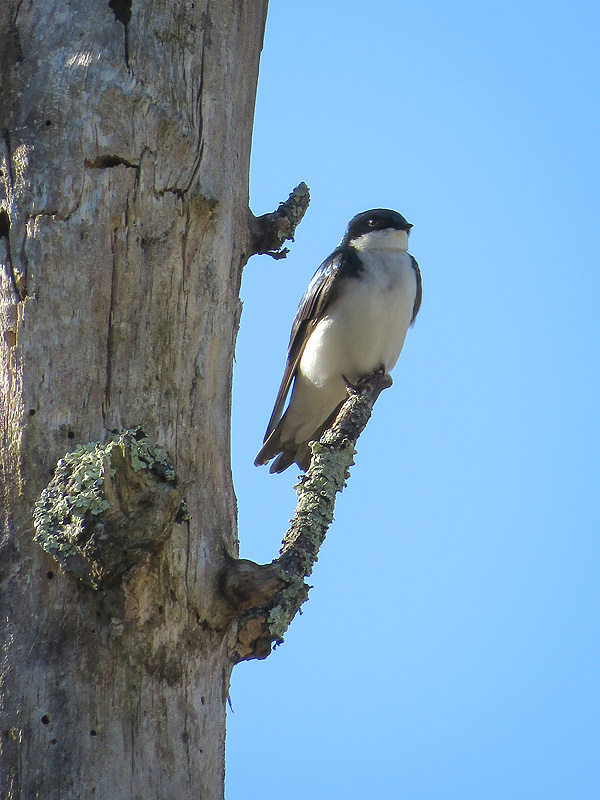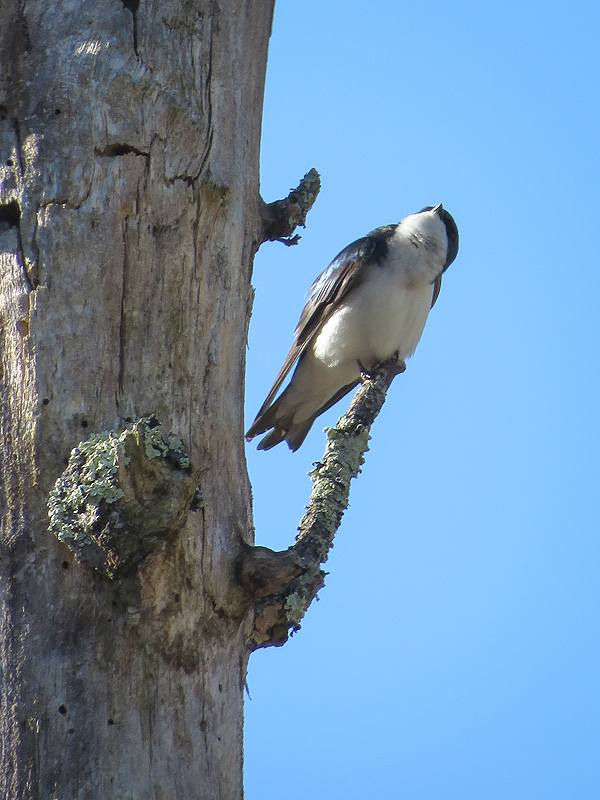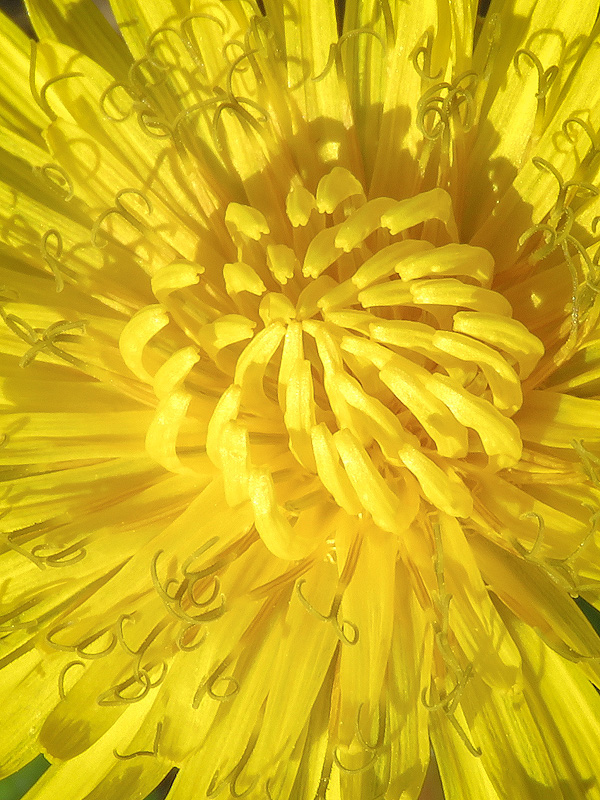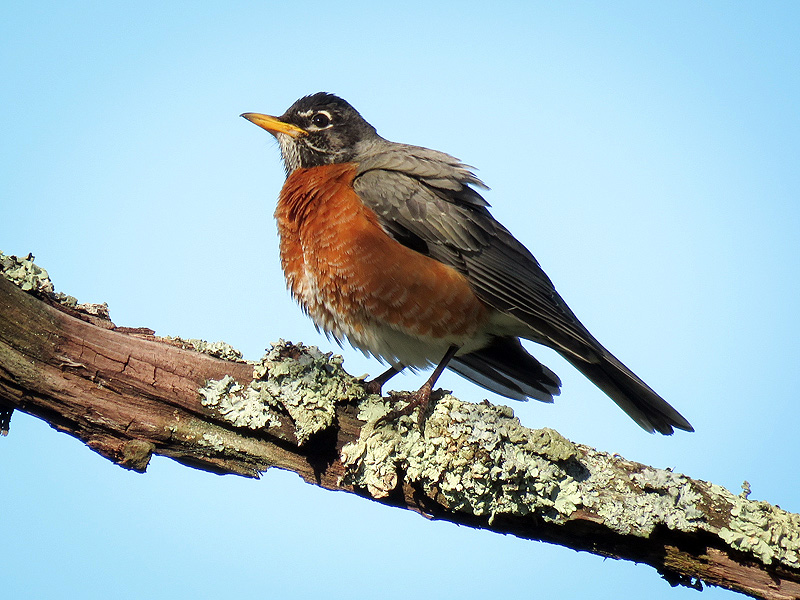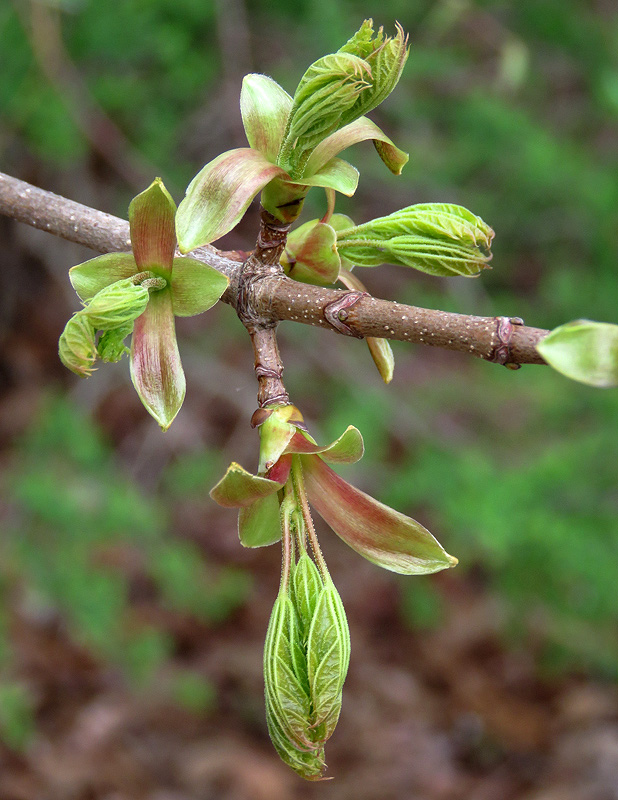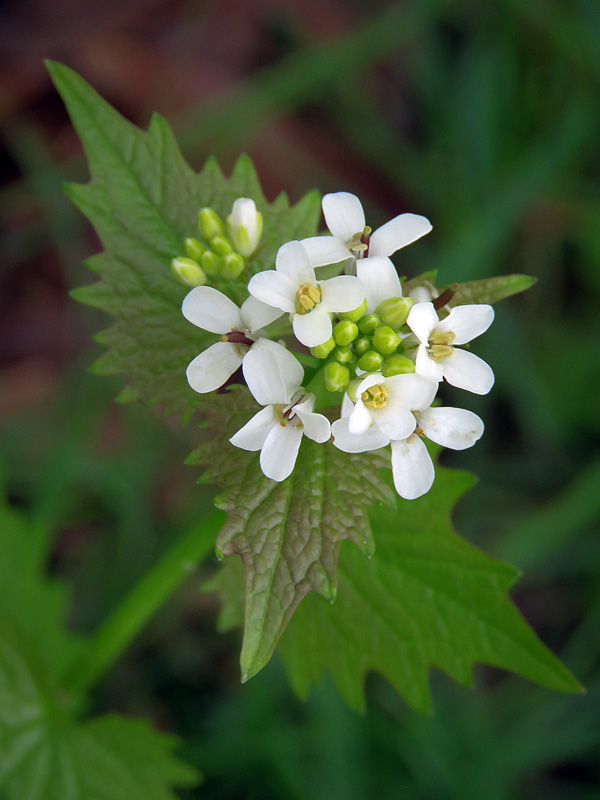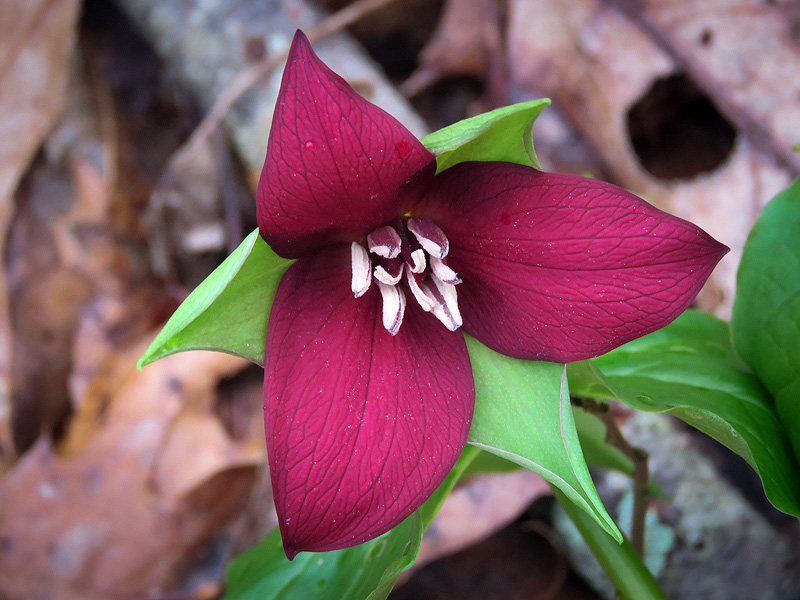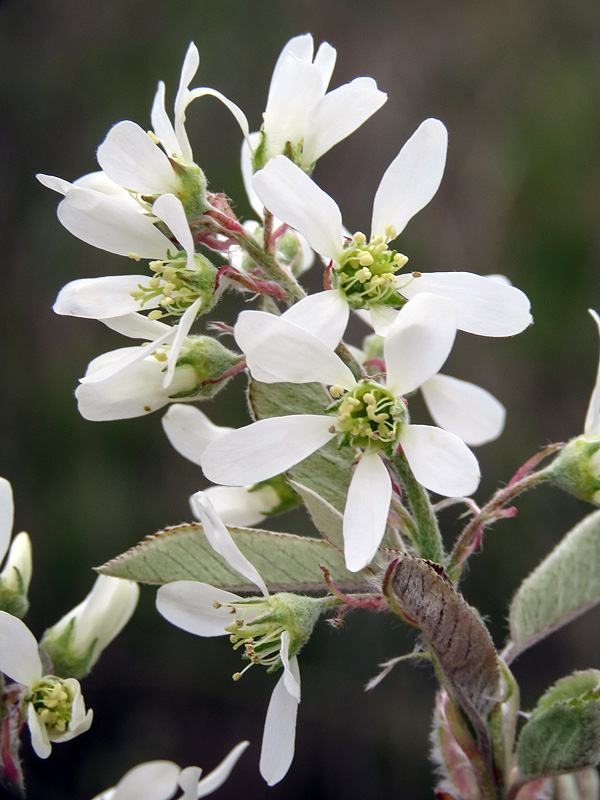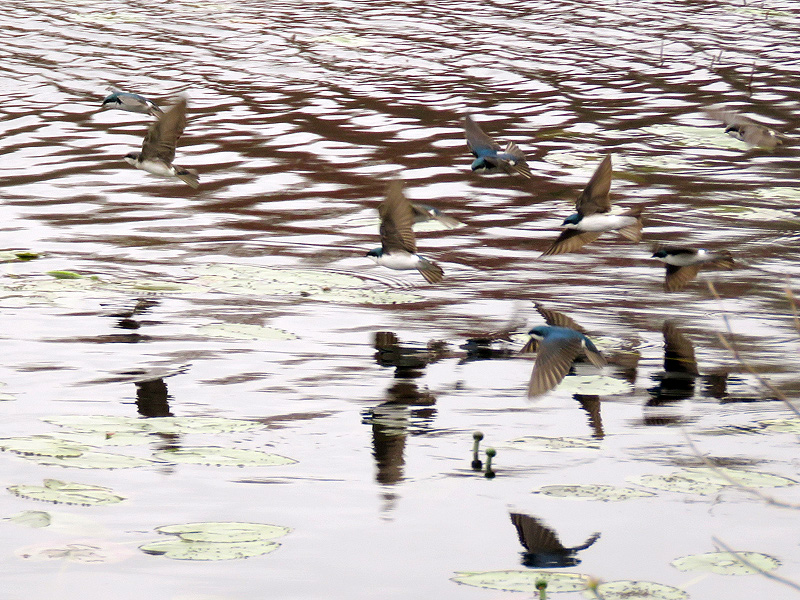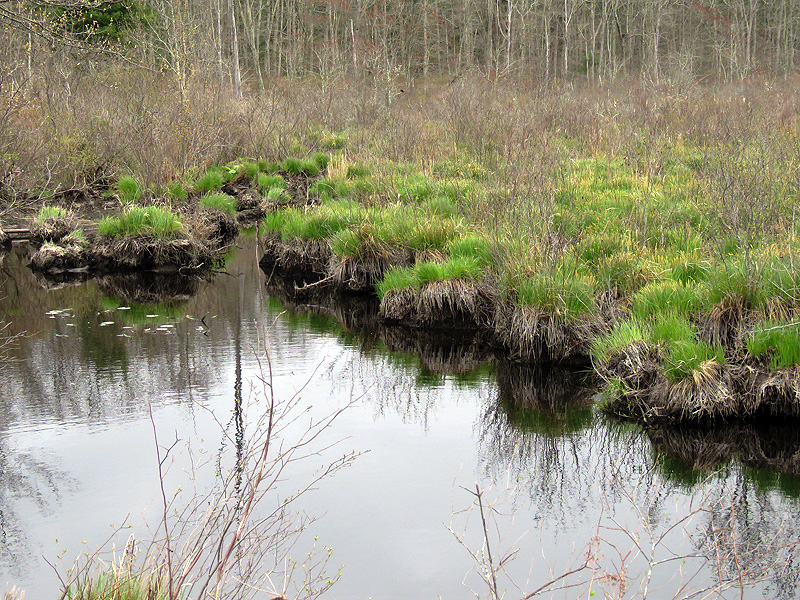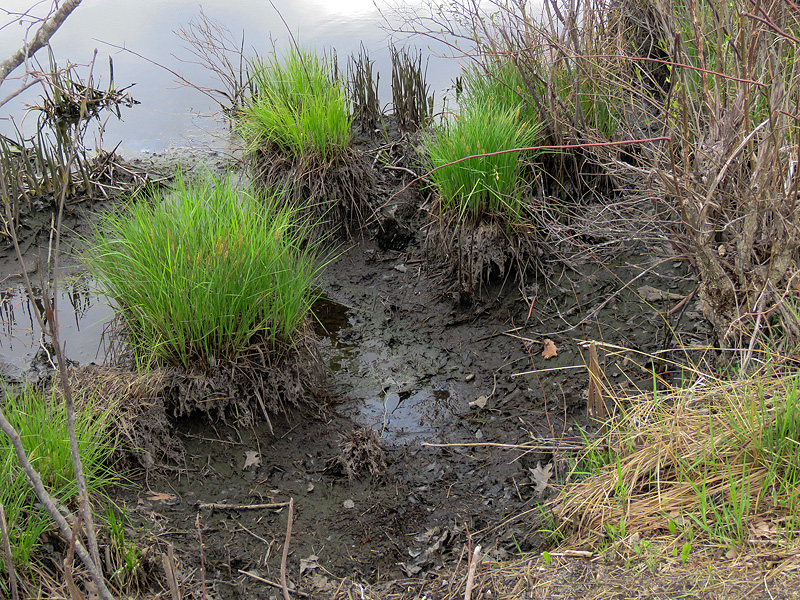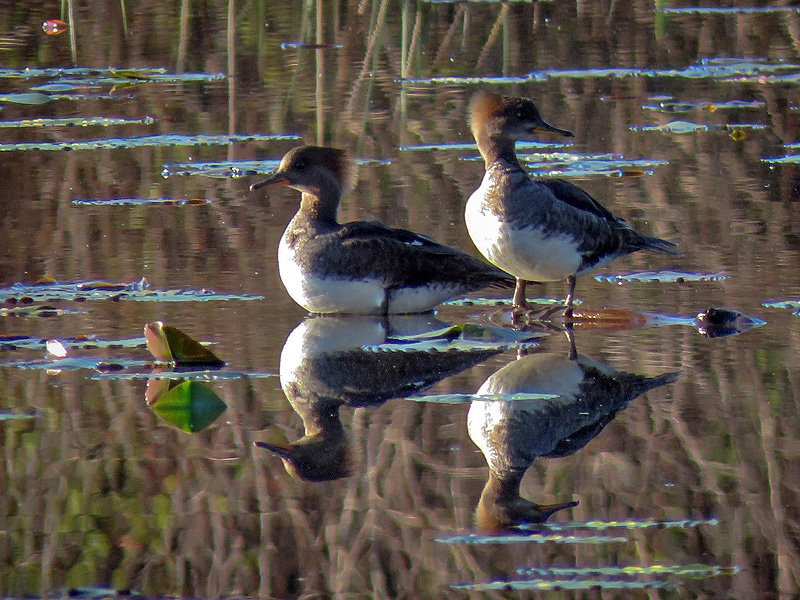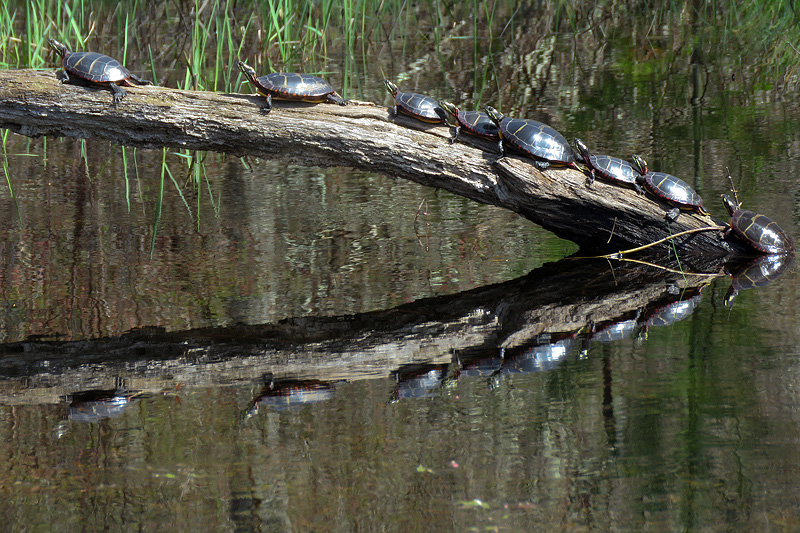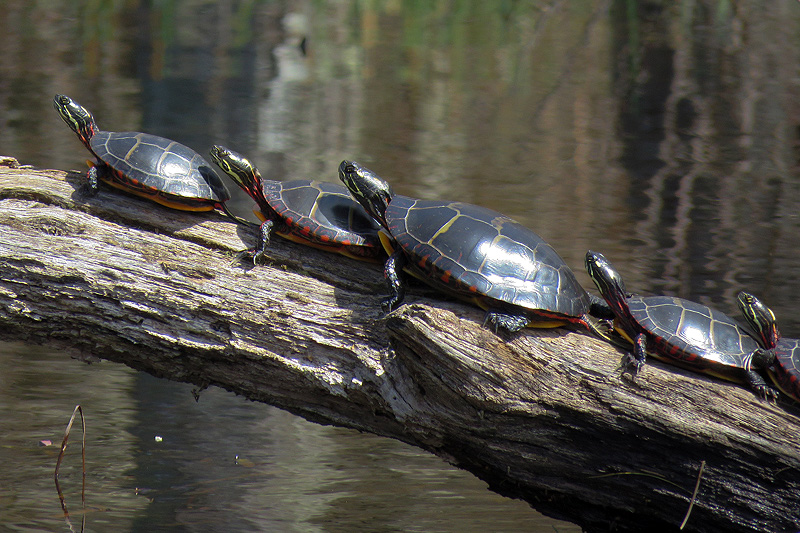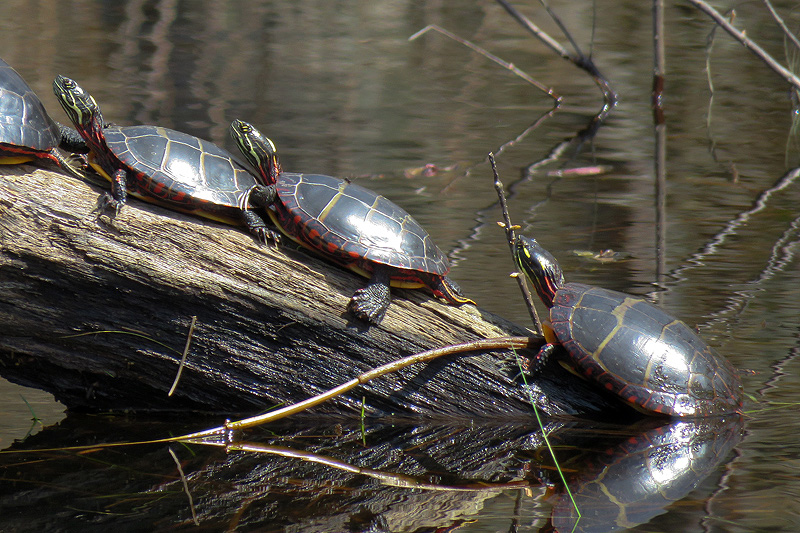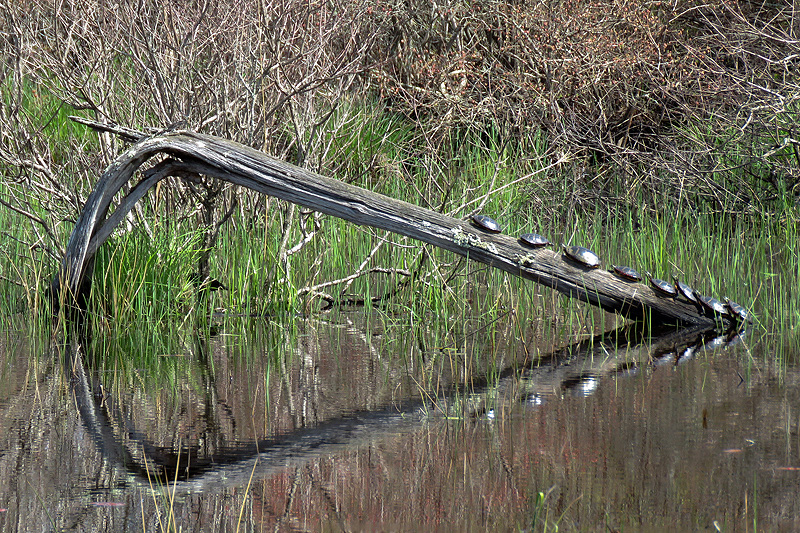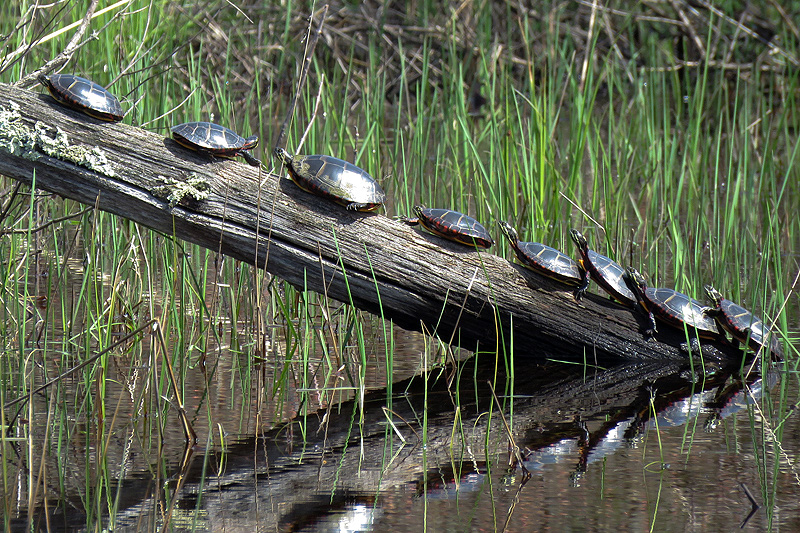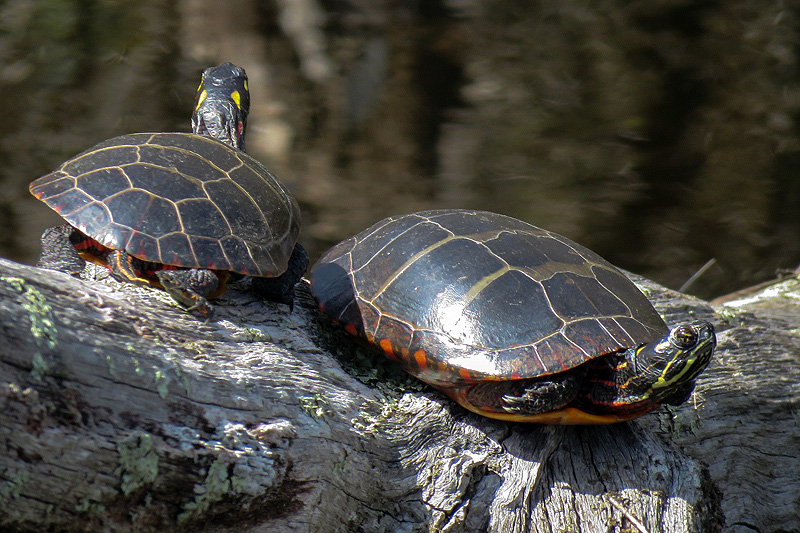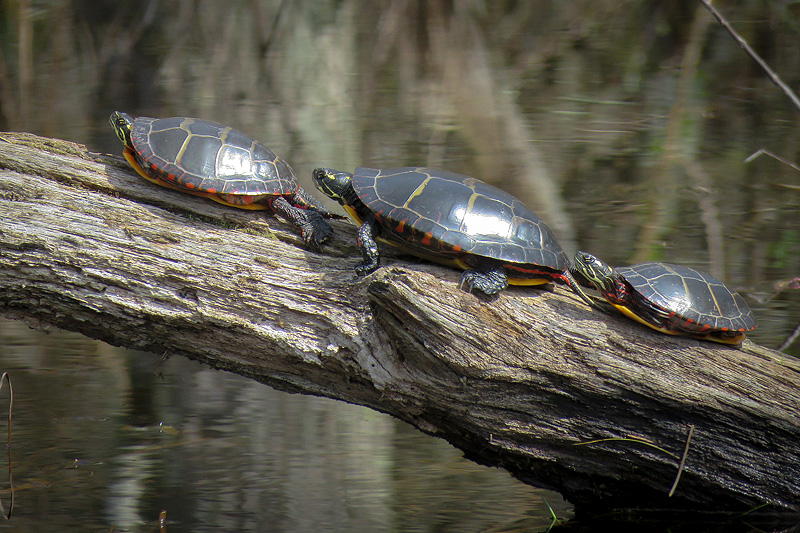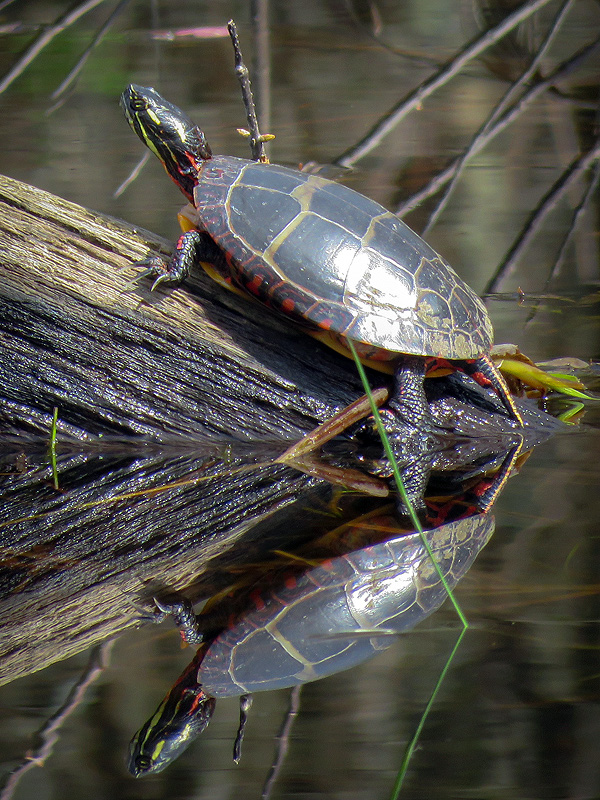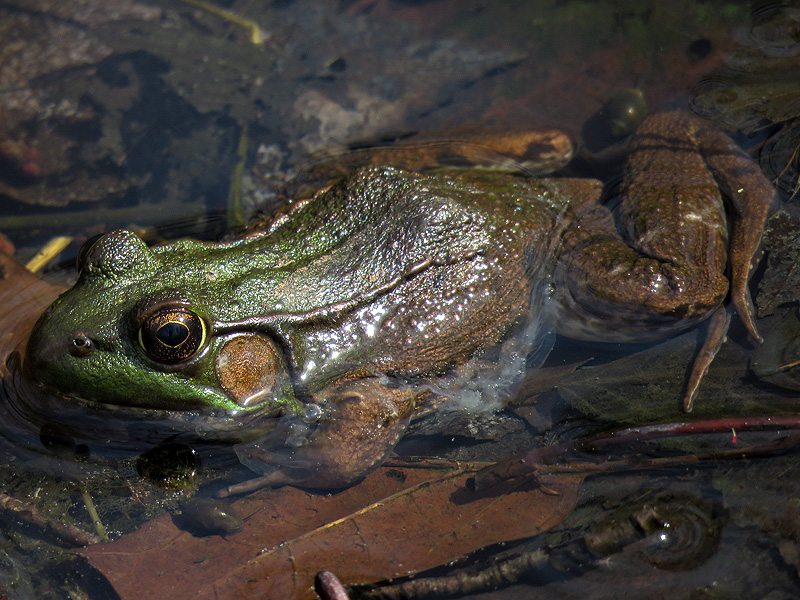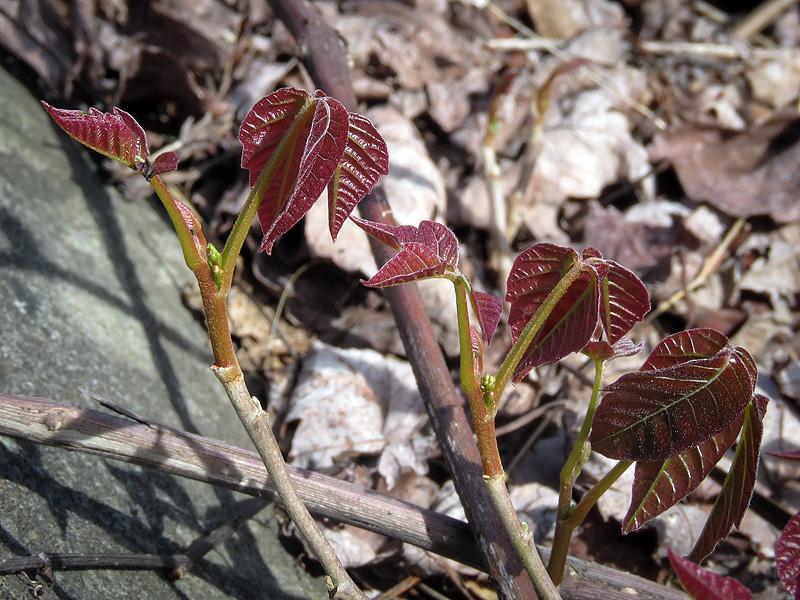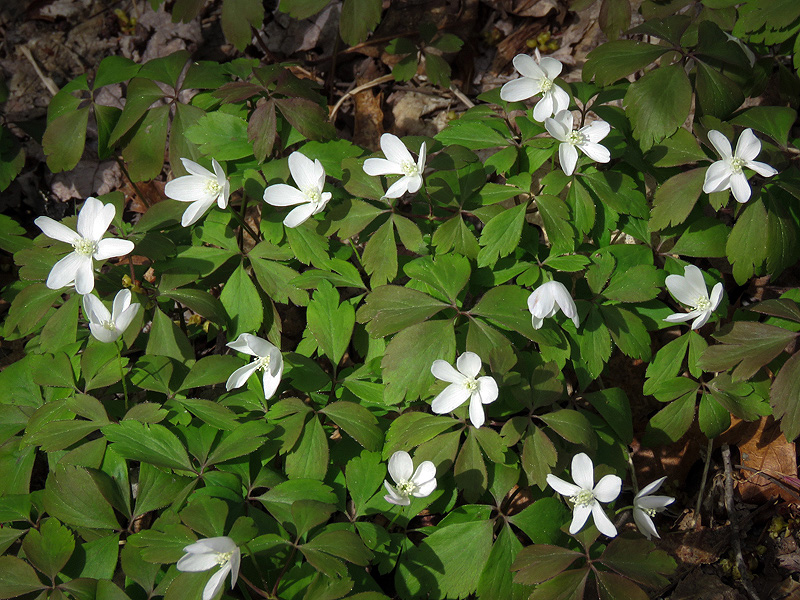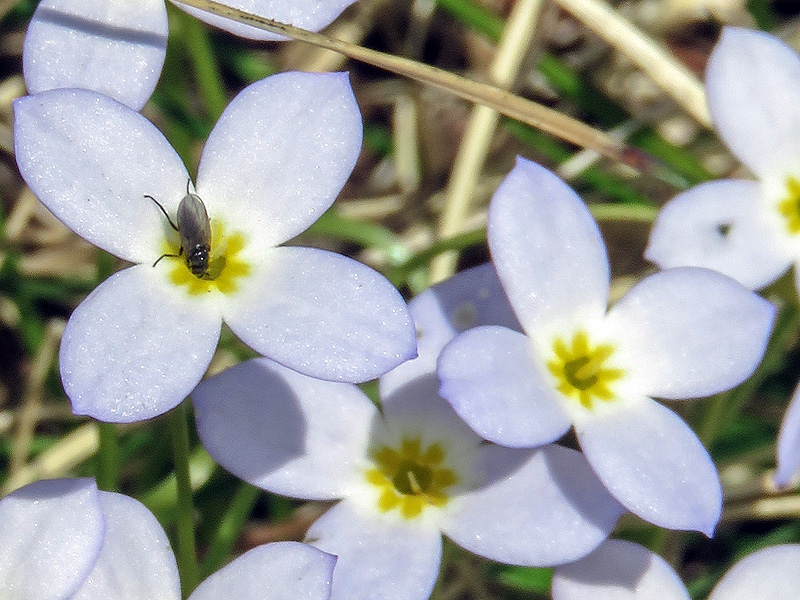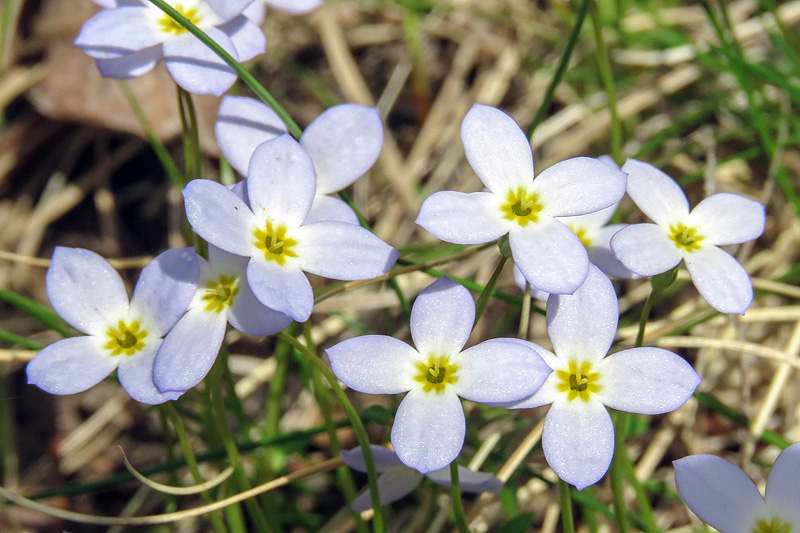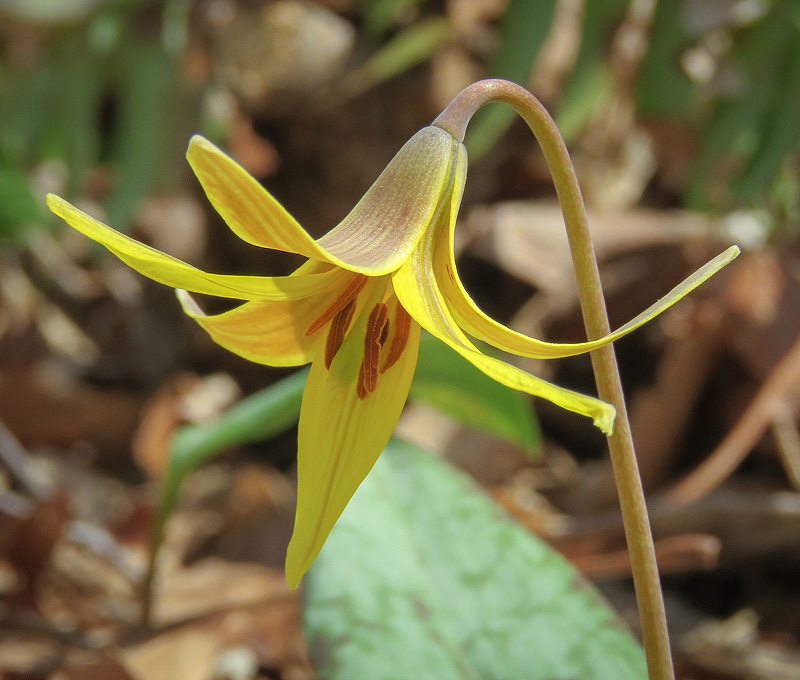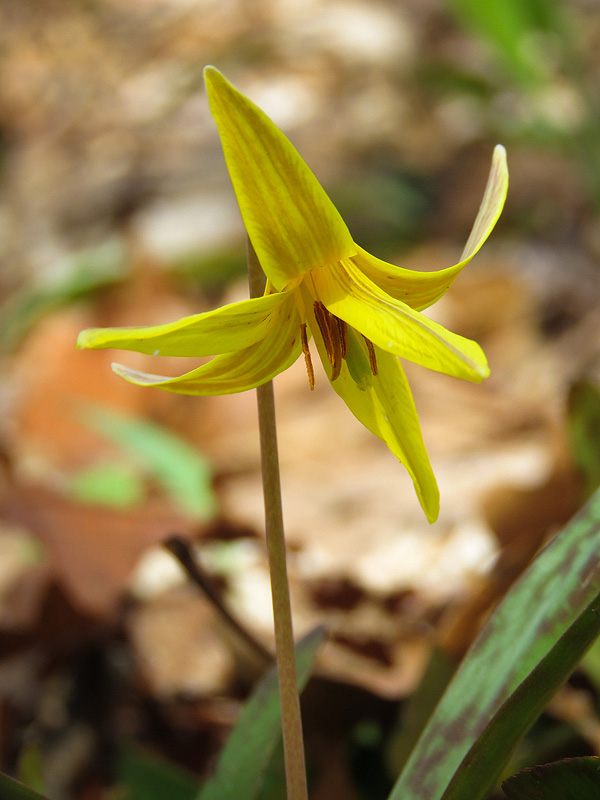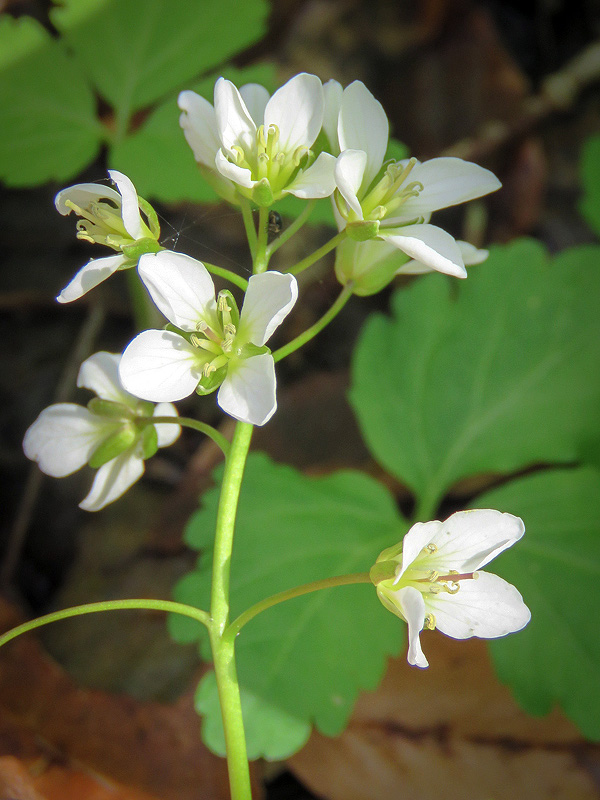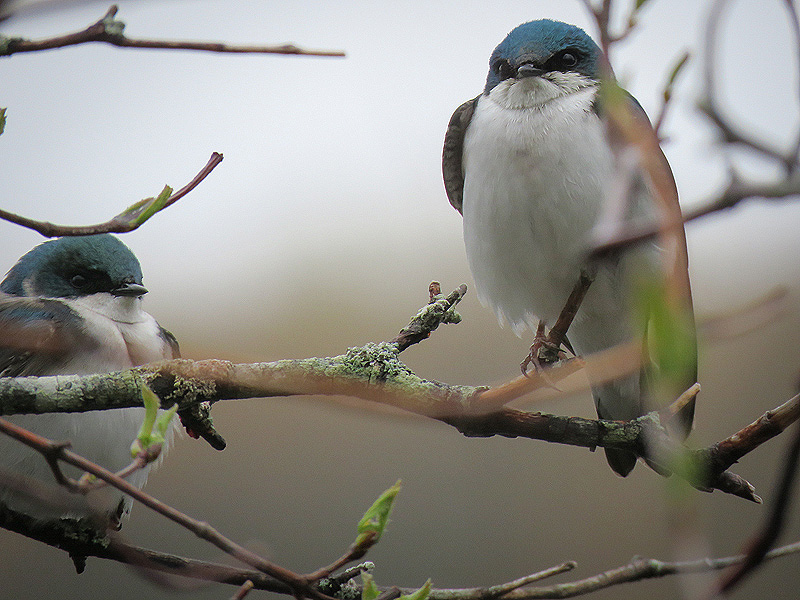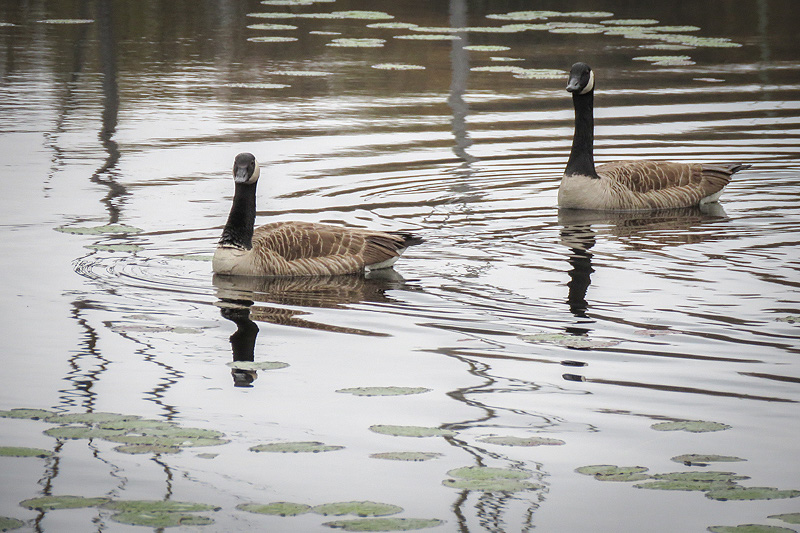Along the Air Line... 2019 - Spring, Part 7 The Air Line Trail in Eastern Connecticut - Stan Malcolm Photos |
HOME: Air Line... 2019 Pages Menu Stan's FlickR Albums |
April 25th. In the background the reds of maples and pale greens of oaks. |
Water levels in the Raymond Brook Marsh Wildlife Management Area have dropped at least 18 inches. |
Why? Well, in the last days of March, a beaver trapper cut breaches in the dam that has maintained the normal water level over the 17+ years I've been walking the trail. |
And why did he do that? To attract beavers programmed to repair such breaches who then could be drowned in his nearby traps. Of course heavy rains since the end of March have eroded the breaches still further, causing the water level so attractive to waterfowl to drop precipitously. This is just so wrong. |
A brief walk east of Cook Hill Road on my way to UConn (where I photographed treehoppers and continued updating the collection's database of weevil specimens). |
|
A male Tree Swallow (Tachycineta bicolor) at the marsh there. |
|
|
Dandelion (Taraxacum officinale) flower beginning to open. |
A male American Robin (Turdus migratorius). |
|
April 26th. Norway Maple (Acer platanoides) flowers... |
|
...and incipient leaves. |
|
Garlic Mustard (Alliaria petiolata), an invasive plant. |
Red or Purple Trillium (Trillium erectum). |
|
|
Serviceberry or Shadbush (Amelanchier arborea). |
Crowds of fast moving Tree Swallows (Tachycineta bicolor) foraging for insects over the marsh. |
|
On or about March 27th, a beaver trapper cut several gaps in the most important beaver dam at Raymond Brook Marsh. |
This beaver lodge is essentially high and dry. |
Hummocks are exposed... |
...and the muddy bottom is exposed to drying in many places. |
All this damage for what? A couple of beaver pelts at most? |
April 29th. Two immature male Hooded Mergansers (Lophodytes cucullatus) or perhaps Red-breasted Mergansers (Mergus serrator) at Raymond Brook Marsh this morning. (ID Help?) |
Lots of Painted Turtles (Chrysemys picta) sunning mid-afternoon. |
|
|
|
|
|
|
|
|
Green Frog (Rana clamitans) in the trailside ditch. |
Poison Ivy (Toxicodendron radicans) leaves starting to expand. |
Field Horsetail (Equisetum arvense) - tan fertile stalks and immature green vegetative stalks. |
Wood Anemone (Anemone quinquefolia). |
Bluets (Houstonia caerulea). I don't know the fly. |
|
|
Trout-lily (Erythronium americanum). |
|
|
|
Toothwort (Dentaria diphylla). |
|
April 30th. Tree Swallows (Tachycineta bicolor) taking a break. |
A pair of Canada Geese (Branta canadensis). |
|

